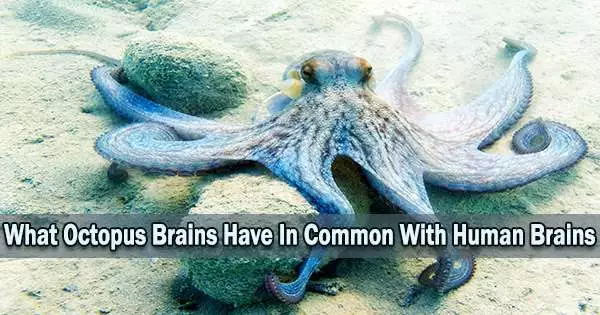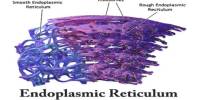Animals with sophisticated neurological systems, such as cephalopods like octopuses, squids, and cuttlefish, are highly intelligent. The Max Delbrück Center’s Nikolaus Rajewsky-led research team has now demonstrated in Science Advances that their evolution is connected to a notable expansion of their microRNA repertoire.
The last known common ancestor of humans and cephalopods is a rudimentary wormlike animal with low intelligence and basic eyespots, which we can find if we travel far enough back in evolutionary history.
In the future, the animal kingdom can be separated into organisms with and without backbones. Invertebrates did not evolve huge, sophisticated brains with a range of cognitive capacities, whereas vertebrates, in particular primates and other mammals, did. The cephalopods are the sole exception.
Why only these mollusks were able to build such a sophisticated neurological system has long been a mystery to scientists. A potential explanation has now been presented by an international team headed by academics from the Max Delbrück Center and Dartmouth College in the United States.
In a paper published in Science Advances, they explain that octopuses possess a massively expanded repertoire of microRNAs (miRNAs) in their neural tissue reflecting similar developments that occurred in vertebrates.
“So this is what connects us to the octopus,” says Professor Nikolaus Rajewsky, scientific director of the Berlin Institute for Medical Systems Biology of the Max Delbrück Center (MDC-BIMSB), head of the Systems Biology of Gene Regulatory Elements Lab, and the paper’s last author. He explains that this finding probably means miRNAs play a fundamental role in the development of complex brains.
Since octopuses aren’t typical model organisms, our molecular-biological tools were very limited. So we don’t yet know exactly which types of cell express the new microRNAs.
Grygoriy Zolotarov
In 2019, Rajewsky read a publication about genetic analyses conducted on octopuses. These cephalopods are known to engage in significant RNA editing, which means they frequently use enzymes that can recode their RNA.
“This got me thinking that octopuses may not only be good at editing, but could have other RNA tricks up their sleeve too,” says Rajewsky. And so he began a collaboration with the Stazione Zoologica Anton Dohrn marine research station in Naples, which sent him samples of 18 different tissue types from dead octopuses.
The results of the analyses were surprising: “There was indeed a lot of RNA editing going on, but not in areas that we believe to be of interest,” says Rajewsky. The most interesting discovery was in fact the dramatic expansion of a well-known group of RNA genes, microRNAs.
42 new miRNA families in all, predominantly in the brain, were shown to be present in neural tissue. The team comes to the conclusion that these genes were obviously advantageous to the animals and are thus functionally significant because they were conserved throughout cephalopod evolution.
Rajewsky has spent more than 20 years studying miRNAs. These genes encode short RNA fragments that bind to messenger RNA and regulate protein synthesis instead of being translated into messenger RNAs that carry the instructions for protein synthesis in the cell. Another indication that these novel miRNAs are functionally significant is the conservation of these binding sites throughout cephalopod evolution.
New microRNA families
“This is the third-largest expansion of microRNA families in the animal world, and the largest outside of vertebrates,” says lead author Grygoriy Zolotarov, MD, a Ukrainian scientist who interned in Rajewsky’s lab at MDC-BIMSB while finishing medical school in Prague, and later.
“To give you an idea of the scale, oysters, which are also mollusks, have acquired just five new microRNA families since the last ancestors they shared with octopuses while the octopuses have acquired 90.”
Oysters, adds Zolotarov, aren’t exactly known for their intelligence.
Rajewsky’s fascination with octopuses began years ago, during an evening visit to the Monterey Bay Aquarium in California. “I saw this creature sitting on the bottom of the tank and we spent several minutes so I thought looking at each other.” He says that looking at an octopus is very different to looking at a fish: “It’s not very scientific, but their eyes do exude a sense of intelligence.” Octopuses have similarly complex “camera” eyes to humans.
From an evolutionary perspective, octopuses are unique among invertebrates. They possess a core neurological system as well as a peripheral nervous system that can function independently. Even if an octopus loses one of its tentacles, the remaining tentacle is still mobile and touch-sensitive.
The fact that octopuses utilize their limbs very specifically as tools to open shells, for example, may be the reason why they are the only animals to have evolved such complex brain functions.
Octopuses also show other signs of intelligence: They have a strong memory and are quite interested. They are able to identify persons and even prefer some over others. Due to the fact that they alter their skin’s structure and color as they sleep, researchers now speculate that they even dream.
Alien-like creatures
“They say if you want to meet an alien, go diving and make friends with an octopus,” says Rajewsky. He’s now planning to join forces with other octopus researchers to form a European network that will allow greater exchange between the scientists. Rajewsky claims that despite the tiny size of the group right now, interest in octopuses is rising across the board, especially among behavioral scientists.
He claims that studying an intelligence that evolved wholly independently of our own is fascinating. But it’s not easy: “If you do tests with them using small snacks as rewards, they soon lose interest. At least, that’s what my colleagues tell me,” says Rajewsky.
“Since octopuses aren’t typical model organisms, our molecular-biological tools were very limited,” says Zolotarov. “So we don’t yet know exactly which types of cell express the new microRNAs.”
Rajewsky’s team are now planning to apply a technique, developed in Rajewsky’s lab, which will make the cells in octopus tissue visible at a molecular level.
















